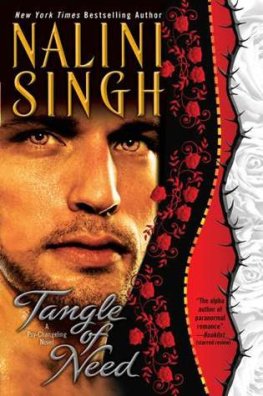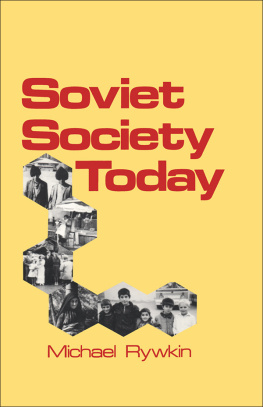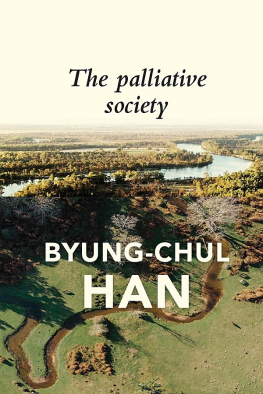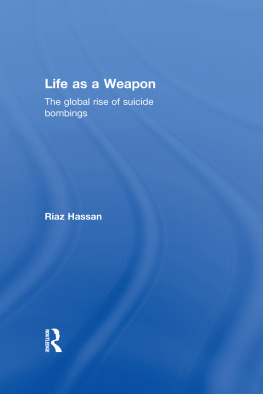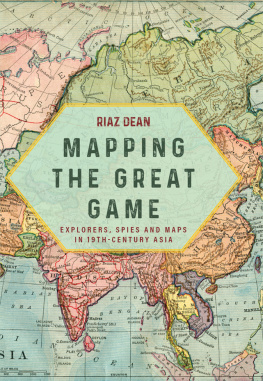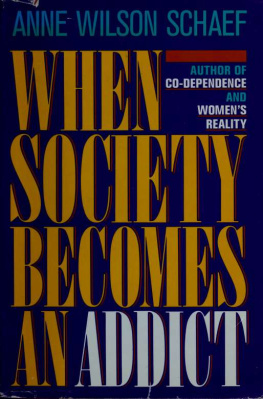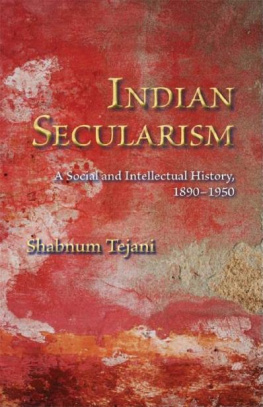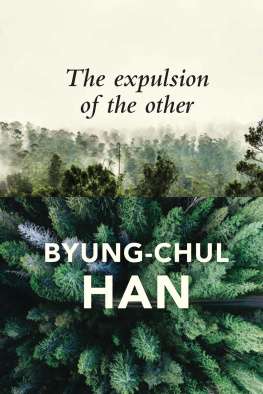University of California Press, one of the most distinguished university presses in the United States, enriches lives around the world by advancing scholarship in the humanities, social sciences, and natural sciences. Its activities are supported by the UC Press Foundation and by philanthropic contributions from individuals and institutions. For more information, visit www.ucpress.edu.
University of California Press
Oakland, California
2019 by Riaz Tejani
Library of Congress Cataloging-in-Publication Data
Names: Tejani, Riaz, 1977- author.
Title: Law and society today / Riaz Tejani.
Description: Oakland, California : University of California Press, [2019] | Includes bibliographical references and index. |
Identifiers: LCCN 2019011918 (print) | LCCN 2019017017 (ebook) | ISBN 9780520968400 (ebook) | ISBN 9780520295742 (pbk. : alk. paper)
Subjects: LCSH : Sociological jurisprudenceHistory. | Sociological jurisprudenceUnited StatesHistory.
Classification: LCC K 370 (ebook) | LCC K 370 . T 45 2019 (print) | DDC 340/.115dc23
LC record available at https://lccn.loc.gov/2019011918
Manufactured in the United States of America
28 27 26 25 24 23 22 21 20 19
10 9 8 7 6 5 4 3 2 1
Preface
Welcome to Law and Society Today . This book is the culmination of twenty years of reading, talking, writing, and teaching about pathways between legal norms and institutions on one hand and society and culture on the other. At the start of those twenty years I was, like many of you, a student getting my feet wet in the subject.
Sociolegal studiesas the law and society field is often calledwas surprisingly mysterious to me. It had to be more than just alternating looks at law and social processes. It had to be its own thing. But in those years experts werent sure what that was exactly. Was it the sociology of law? Kind of, but sociology was far from the only approach; it also needed the input of anthropologists, political scientists, historians, and so forth. Was it going to help prelaw students with a glimpse of law school, or law practice? Again, kind of, but it had to be neither of those two things, since it was a college course about law in society. I distinctly recall my professors eschewing any core textbooks. They didnt even use readers or essay collections. In those days there werent any. They gathered their own favorite articles and released them to uswith all the proper copyright permissions, I am quite sure.
Fifteen years later, given the chance to teach a law and society course in the University of Illinois system, I jumped at it. By that time, there were numerous dedicated textbooks, readers, and collections. Yet I found mosteven the best oneslacking in important ways. By that time, I also had a law degree of my own (plus a gently used membership in the California Bar), as well as a PhD in sociocultural anthropology with an emphasis in law and politics. I found the available books overly formal and institutional in their presentation, heavily weighted toward criminal justice as colleges and universities had grown to emphasize that major as a vocational value-add, or dominated by the theory and methods of sociologywhere much of the early law and society research had taken place. Above all, most were written by nonlawyers who paid little attention to what lawyers actually did as engaged members of the society they affected.
I wanted a body of material I could proudly offer my students that was lively in its presentation and interested in both civil and criminal justice systems (after all, the number of civil cases filed in federal court in 2017 outnumbers the number of criminal cases by about four to one). I wanted a text that drew from all of the relevant law and society disciplines, including anthropology, history, public policy, economics, and law. And I wanted something that spoke about the inner workings of lawabout doctrine and procedure, for exampleas only lawyers might know it. My students, I felt, deserved such a text. But there was none out there.
So I decided to assemble my own. I began by collecting raw articles, book chapters, and mixed media the way my own professors had more than a decade earlier. I then put together dozens of lesson plans, Power Point slide decks, question-and-answer sessions, quizzes, and writing assessments around these materials. I taught from these resources for several years to high student satisfactionincluding feedback from former pupils that they were now using some of this stuff in their first-year law school days. Finally, in late 2016, I was speaking with Maura Roessner from UC Press and she told me they were looking for a fresh approach to law and society for a new course text. I said I thought I had one and explained it. She agreed, and it became this book.
Law and Society Today is the lively, comprehensive, interdisciplinary book I wished I had had when I began teaching the subject. It draws from the major fields that make up sociolegal studies while inviting you, the reader, to evaluate the contributions each has made. It presents key theories that law and society has long held dearlike critical race theory, historical materialism, disciplinary power, and morebut it always checks these against current and recent examples from the worlds of civil and criminal justice. In its final pages, it looks to the future, to new developments like genetics, climate change, and social media, to ask how far our current understandings will reach in explaining the worlds of tomorrow.
In bringing together these disparate sources and influences, this book covers a lot of ground. It understands that this course is taught in a wide array of academic settings and departments, course levels, and degree programs. It remains versatile in its language, abstraction, and theoretical suppositions. Instructors can easily skip sections here or there or take them out of order if that suits local needs better. Factual examples chosen are interesting and current, but there are always more happening every day. Students should feel welcome to bring their own experience to supplement all that this book claims to offer. In that sense, the book really is about law and society today. Today means the issues are pressing, and the book tries to earn your attention for them in a way that most others take for granted. Today means the issues are all around you, in the technologies you use to be a good student or in the stories that connect you with your peers. Today means the book combines ideas in ways that might surprise an older generation of students. And today implies a yesterday to build upon and a tomorrow worth working hard for.




